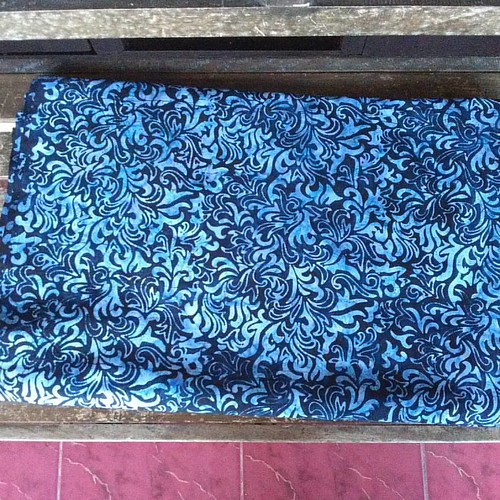involved 30 min deposition in isopropanol 50% and glycerine 99.5%, followed by 30 min depositions in isopropanol of ascending concentration. We applied toluidine-blue staining. Entellan was used for sealing the microscopy slides. Scanning electron microscopy imaging was conducted with a SEM LEO 435 VP. Preparation of tentacles involved dehydration in methanol, critical point drying with a LPD 030, mounting on aluminium stubs with conductive adhesive tabs, and gold coating with a Sputter Coater 108 auto. �� 2 Catapulting Tentacles Results and Discussion D. glanduligera grows as a rosette on the ground of up to 4 cm in diameter and catches predominantly non-flying arthropods. Each spoon-shaped trap leaf develops numerous glue-tentacles towards the centre and about 1218 marginal snap-tentacles extending from the lamina margin . Both tentacle types are touch-sensitive, 24658113 and their bending motions towards the centre of the trap are triggered by mechanical stimuli on the respective tentacle heads. Capture of walking prey takes place in two steps: First, animals that touch a snap-tentacle trigger its fast catapult-action and the prey is first lifted  and then thrown onto the sticky central part of the leaf. Subsequently, glue-tentacles 3 Catapulting Tentacles draw the prey into the depression of the deeply concave leaf. This slower second step lasts about two minutes. Further leaf blade movement was not observed. The new observations confirm that the trap system employed by D. glanduligera is more complex than in other Drosera species relying solely on stickiness to catch prey and is thus more accurately termed a catapult-flypaper-trap. We observed that snap-tentacles are not triggered by vibrations of fruit flies already caught, hence are likely to become activated only by animals approaching the trap or escaping the glue. Snap-tentacles are 6.362.2 mm long, bilaterally symmetric and each carry a raised gland on the terminal disc . Triggering the head entails an initial post-stimulation phase without movement. Snap-tentacles move by deformation of their hinge-zones which are situated next to the broadened tentacle base. Excised tentacles were observed to bend by 360 degrees, but when attached the motion is blocked halfway by the central part of the leaf. The duration of the smooth motion in some tentacles can be as fast as 75 ms, with a maximum tentacle head velocity of 0.17 ms21 and a maximum acceleration of 7.98 ms22. However, other snaptentacle movements were observed to last several seconds, suggesting that movement actuation is variable and possibly depends on the physiological 871700-17-3 site condition or vigour of the plant or environmental factors such as temperature and humidity. Snaptentacle motion is reported to be the fastest on very hot days. We interpret the rapid change of tentacle curvature to be principally due to hydraulic forces within the tentacle and suggest two possible scenarios: 1) Rapid water transport occurs from cells of the adaxial half of the tentacle, which contract, 19286921 to cells in the abaxial half, which thereby extend; or 2) actuation involves an active loss of turgor pressure in adaxial cells, followed by tentacle bending caused by prestress of the abaxial surface where epidermal cells are about half the size as those on the adaxial surface and could store elastic energy. To elucidate the theoretical rate of hydraulic actuation we compared the duration of the fastest movement with the poroelastic time tp, 16 ms according to Ref., w
and then thrown onto the sticky central part of the leaf. Subsequently, glue-tentacles 3 Catapulting Tentacles draw the prey into the depression of the deeply concave leaf. This slower second step lasts about two minutes. Further leaf blade movement was not observed. The new observations confirm that the trap system employed by D. glanduligera is more complex than in other Drosera species relying solely on stickiness to catch prey and is thus more accurately termed a catapult-flypaper-trap. We observed that snap-tentacles are not triggered by vibrations of fruit flies already caught, hence are likely to become activated only by animals approaching the trap or escaping the glue. Snap-tentacles are 6.362.2 mm long, bilaterally symmetric and each carry a raised gland on the terminal disc . Triggering the head entails an initial post-stimulation phase without movement. Snap-tentacles move by deformation of their hinge-zones which are situated next to the broadened tentacle base. Excised tentacles were observed to bend by 360 degrees, but when attached the motion is blocked halfway by the central part of the leaf. The duration of the smooth motion in some tentacles can be as fast as 75 ms, with a maximum tentacle head velocity of 0.17 ms21 and a maximum acceleration of 7.98 ms22. However, other snaptentacle movements were observed to last several seconds, suggesting that movement actuation is variable and possibly depends on the physiological 871700-17-3 site condition or vigour of the plant or environmental factors such as temperature and humidity. Snaptentacle motion is reported to be the fastest on very hot days. We interpret the rapid change of tentacle curvature to be principally due to hydraulic forces within the tentacle and suggest two possible scenarios: 1) Rapid water transport occurs from cells of the adaxial half of the tentacle, which contract, 19286921 to cells in the abaxial half, which thereby extend; or 2) actuation involves an active loss of turgor pressure in adaxial cells, followed by tentacle bending caused by prestress of the abaxial surface where epidermal cells are about half the size as those on the adaxial surface and could store elastic energy. To elucidate the theoretical rate of hydraulic actuation we compared the duration of the fastest movement with the poroelastic time tp, 16 ms according to Ref., w
